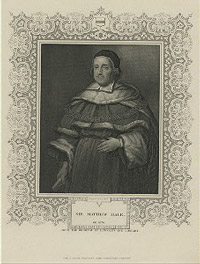 The third rationale underlying immunity is the ongoing consent theory, proposed by England's Chief Justice Sir Matthew Hale in 1732 and still embedded in our modern laws. Hale characterized marriage as a contractual relationship and concluded that by entering into marriage, a woman gave continuing consent to intercourse. Regarding ongoing consent theory, he wrote:
The third rationale underlying immunity is the ongoing consent theory, proposed by England's Chief Justice Sir Matthew Hale in 1732 and still embedded in our modern laws. Hale characterized marriage as a contractual relationship and concluded that by entering into marriage, a woman gave continuing consent to intercourse. Regarding ongoing consent theory, he wrote:
"[T]he husband cannot be guilty of a rape committed by himself upon his lawful wife, for by their mutual matrimonial consent and contract the wife hath given up herself in this kind unto her husband, which she cannot retract."
— Matthew Hale, The History of the Pleas of the Crown (1736) at 628.
Although Hale offered no basis for his theory of ongoing consent, it was quickly enshrined in English common law and unquestioningly adopted in the United States. (See, e.g., Commonwealth v. Fogerty, 74 Mass. (8 Gray) 489 (1857) (an allegation of rape must include an assertion that the victim was not the wife of the defendant). Marriage to the victim served as a complete defense against the charge.
Women's literature and marriage manuals of the 19th century urged that women have control over “maternal rights”—the decision whether to conceive a child—and that men practice restraint in exercising their conjugal rights. Many publications of the day noted the ongoing misery of women who were routinely subjected to unwanted intercourse. To obtain the rare divorce on the grounds of excessively abusive sexual aggression by the husband, a wife would have to show far more than misery—even extreme injury was not always enough. The women and men who participated in the 1848 Seneca Falls Convention that inaugurated the women's rights movement were deeply concerned with the issue of marital rape. Yet as the women's rights movement turned to the issue of the right to vote and political equality, the issue of sexual self-determination was left behind.
Husbands' immunity from a charge of marital rape remained unchallenged until the mid-1970s. Even after progress was made in criminalizing domestic violence, sexual violence within marriage remained permissible. And even today, the statutory reforms respecting the marital rape exemption remain incomplete.
